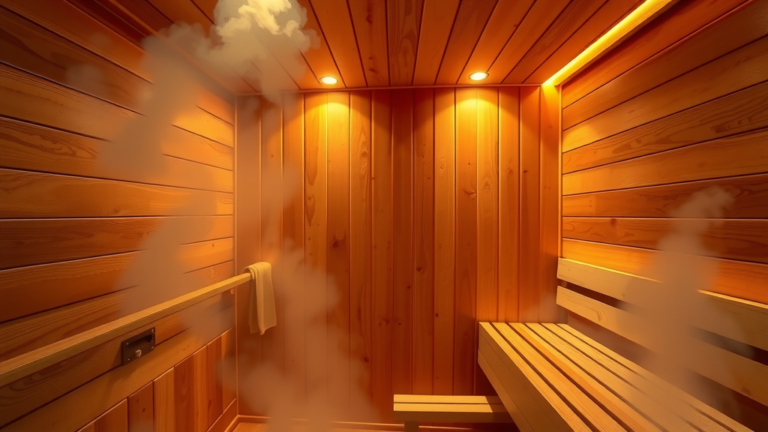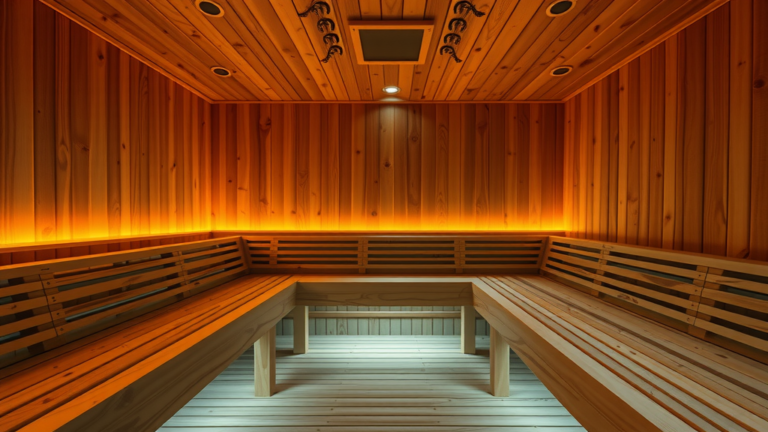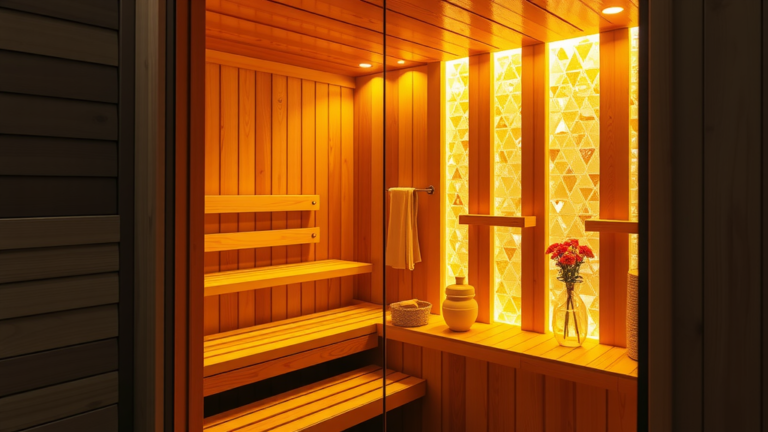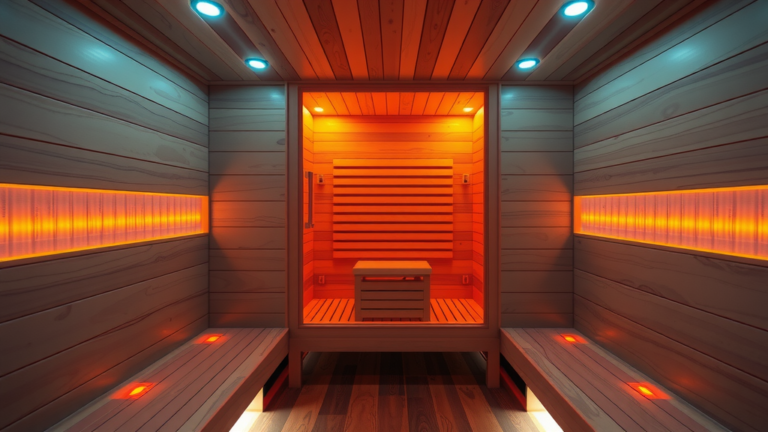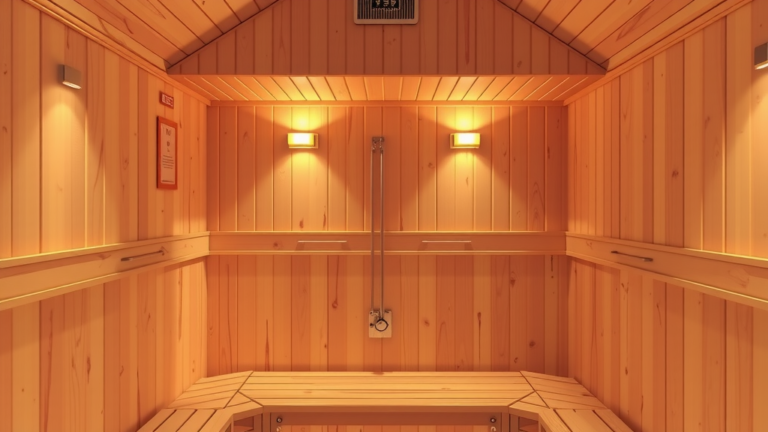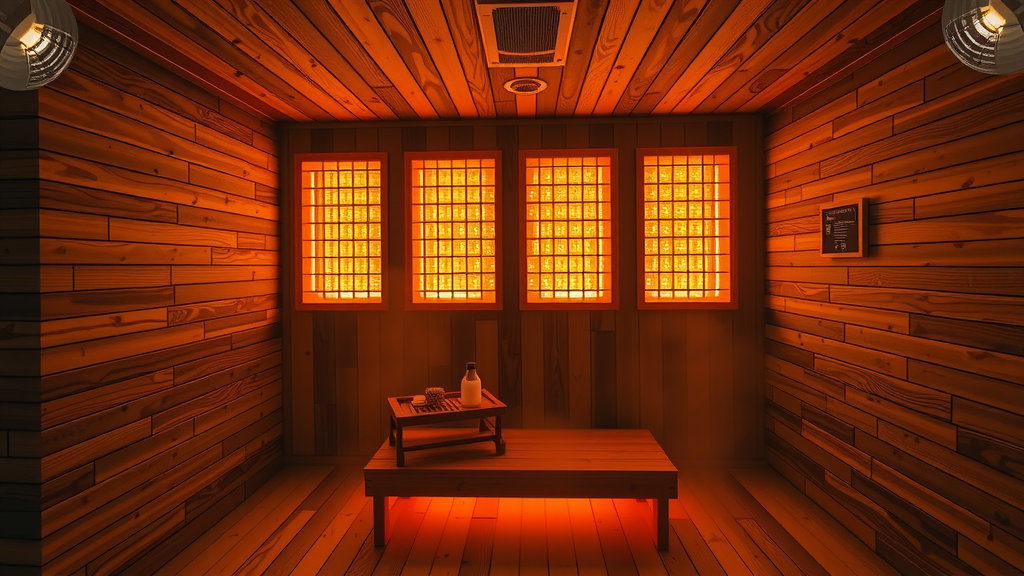
Many individuals seek therapeutic solutions that promote relaxation and well-being. Infrared heaters generate radiant heat, directly warming the body while maintaining a lower ambient temperature.
Traditional heating methods utilize wood stoves or electric elements to create a humid environment, resulting in a distinct sauna experience.
Users often perceive varying comfort levels between the two types, as infrared saunas operate between 120-150°F, making them more appealing for those sensitive to heat.
Conversely, traditional saunas typically reach higher temperatures, ranging from 150-195°F, which can increase sweat output and potentially offer respiratory benefits.
- Infrared saunas are recognized for their detoxification properties and improved circulation.
- Traditional saunas encourage social interaction, fostering a sense of community.
- Energy efficiency varies; infrared options generally consume less electricity than traditional setups.
- Maintenance requirements differ significantly; traditional saunas demand more attention due to wood and moisture.
- Regular use of either sauna type may promote muscle recovery after exercise.
Both options contribute to relaxation and stress relief, making personal preference crucial in deciding which sauna suits individual needs. Exploring the benefits of each type can lead to an informed choice that aligns with specific wellness goals.
Click here to purchase a sauna on Amazon
Benefits Of Infrared Heat Therapy
Utilizing infrared therapy offers a method to enhance overall physical wellness significantly. Detoxification is achieved through increased sweat production, which effectively eliminates toxins from the body.
Improved circulation is another primary advantage, facilitating better cardiovascular health by enhancing blood flow.
Consistent sessions can foster muscle recovery and promote comprehensive well-being.
- Lower temperatures in infrared therapy provide a comfortable experience, appealing to long-term users.
- Maintaining hydration before and after therapy is crucial to prevent dehydration.
- Session duration should typically range from 15 to 30 minutes.
Infrared therapy presents distinct relaxation benefits, offering therapeutic effects without the discomfort associated with higher heat levels. Users often find they can incorporate infrared sessions into their wellness routine seamlessly, enjoying the benefits of enhanced relaxation and improved detox benefits.
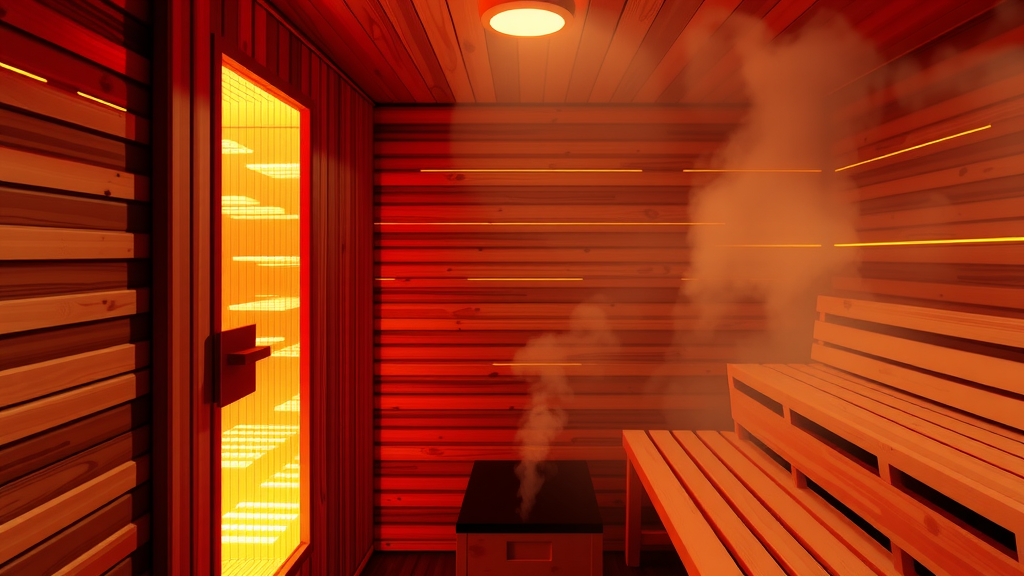
How Does Radiant Heat Work
Radiant heat technology utilizes electromagnetic waves to provide effective warmth directly to the body, enhancing overall well-being. This method contrasts with traditional saunas, which primarily heat the surrounding air, creating a humid environment.
Mechanisms of radiant heat absorption are particularly efficient in infrared saunas, where the body absorbs heat without necessitating high ambient temperatures.
Typical operating temperatures for traditional saunas range between 150-195°F, which relies significantly on the air temperature to generate heat sensation.
In comparison, infrared saunas maintain lower temperature settings of 120-150°F, ensuring a more tolerable comfort level for users while promoting relaxation. Individuals often report various health claims, such as improved circulation and detoxification, linked to this unique heating method.
- Infrared Heat: Directly warms the body through radiation.
- Traditional Heat: Warms the air, which then warms the body.
- Temperature Control: Infrared saunas require less heat for comfort.
- Health Claims: Include detox and circulation improvement.
- Installation Process: Generally easier for infrared saunas, requiring less space.
- Maintenance Needs: Infrared saunas typically have lower upkeep requirements.
These distinctive mechanisms of radiant heat absorption in infrared saunas provide advantages over traditional sauna experiences, enhancing relaxation and offering unique benefits. Understanding the different experiences can guide users toward their preferred sauna type while appreciating the cultural significance and health advantages embedded in sauna use. Exploring the various sauna options can further inform choices regarding installation and ongoing maintenance requirements.
Understanding Wood Stove Sauna Types
Wood burning heaters create a unique environment that enhances overall wellness through sauna sessions. Various designs cater to different preferences, promoting relaxation therapy while providing enjoyable experiences.
Traditional Finnish saunas utilize wood stoves to generate consistent heat, ensuring maximum temperature tolerance and steam production.
Outdoor barrel saunas present an attractive option, offering portability and effective heat retention within natural surroundings.
Portable wood stove saunas enhance flexibility, allowing users to create a sauna experience wherever needed.
- Overview of Wood Stove Saunas
- Wood stove saunas deliver heat via wood burning, enhancing the sauna session experience.
- Compared to infrared saunas, traditional wood stoves provide higher humidity levels and temperature ranges.
- Types of Wood Stove Saunas
- Traditional Finnish Sauna: Known for its even heat distribution and therapeutic benefits.
- Outdoor Barrel Sauna: Compact and effective, suitable for various landscapes.
- Portable Wood Stove Sauna: Ideal for mobility and quick setup, enhancing social interaction.
Specific installation requirements for wood stove saunas involve site preparation, proper safety clearances, and adequate ventilation. Necessary materials include heat-resistant insulation and a secure chimney system for smoke exhaust. Regular maintenance needs consist of cleaning the wood stove, managing moisture levels to prevent damage, and inspecting components for optimal functionality. Failure to address these needs may affect the sauna experience.
- Maintenance Needs
- Regular cleaning and upkeep are important for the wood stove’s efficiency.
- Moisture levels must be monitored to prevent structural damage.
- Periodic inspection and replacement of parts maintain optimal operation.
Exploring the different types of wood stove saunas enables informed decisions regarding installation and maintenance. With various offerings, users can select options that align with their relaxation therapy goals while enjoying the unique benefits of sauna use. Integrating these saunas into health regimens fosters overall well-being and encourages consistent use for improved relaxation and recovery.
Compact Sauna Vs Traditional Sauna
When evaluating different sauna options, numerous factors distinguish compact infrared models from their traditional counterparts. Compact infrared saunas utilize radiant heat emitted by infrared heaters, which produces a sauna performance directed at warming the body directly.
Operating at lower temperatures—typically between 120-150°F—these units often enhance user comfort significantly.
Conversely, traditional saunas rely on furnace heating, reaching higher temperatures of 150-195°F, which may be beneficial for increased sweat output and may assist with respiratory benefits but can be uncomfortable for some users.
- Heating Methods: Infrared saunas use radiant heat, whereas traditional saunas depend on air heating.
- Health Benefits: Infrared saunas are associated with the detoxification process and improved circulation, while traditional saunas can offer moisture management that aids respiratory health.
- Energy Efficiency: Infrared saunas typically consume less electricity, which contributes to lower operational costs.
- Maintenance Requirements: Traditional saunas require more upkeep due to concerns related to moisture, whereas infrared models usually demand less maintenance.
The decision to choose between compact infrared and traditional saunas ultimately relies on individual preferences and wellness goals. Both sauna types can effectively support relaxation and stress relief, making user experience a key component in the selection process.
| Feature | Compact Infrared Saunas | Traditional Saunas |
|---|---|---|
| Heating Method | Radiant heat | Furnace heating |
| Operating Temperature | 120-150°F | 150-195°F |
| Energy Efficiency | Lower electricity consumption | Higher electricity consumption |
| Maintenance Requirements | Less maintenance | More upkeep due to moisture |
Humid Environment And Its Effects
Humidity plays a significant role in enhancing respiratory health and overall wellness. Traditional saunas, characterized by their warm, moist air, create conditions that can alleviate breathing difficulties for many individuals.
This environment can provide therapeutic heat, offering relief from respiratory discomfort, particularly for those suffering from asthma or bronchitis.
- User preference often influences whether individuals opt for traditional saunas or infrared options, with comfort levels as a key factor.
- Increased humidity may enhance overall wellness by promoting relaxation and reducing stress levels.
- Sweating induced by elevated humidity levels not only supports detoxification processes but also contributes to improved health outcomes.
- Safety precautions remain essential; hydration is critical to ensure users maintain optimal health during sauna sessions.
The benefits provided by traditional saunas can lead to improved respiratory conditions and an enhanced sense of well-being, distinguishing them from their infrared counterparts. As users choose their preferred sauna experience, the impact of ambient temperature on relaxation and health is clear, making traditional practices a popular choice for many seeking therapeutic relief.
Muscle Recovery And Sauna Sessions
Engaging in heat-based therapies has gained recognition for enhancing recovery after physical exertion. Sauna sessions facilitate effective muscle recovery through heat exposure and increased sweat output.
Improved circulation from these sessions aids in nutrient delivery and waste removal, fostering better recovery outcomes.
Infrared technology allows for deeper tissue penetration at lower temperatures, promoting relaxation and reduced muscle soreness.
Traditional saunas generate heat through air temperature management, leading to higher sweat generation, which can aid detoxification. Regular sauna use assists in maintaining hydration levels, crucial for optimal recovery.
Incorporating saunas into post-exercise routines can significantly support overall health benefits.
- Infrared saunas, utilizing infrared technology, emit radiant heat absorbed directly by the body.
- Traditional saunas achieve warmth through air heating, typically reaching higher temperatures of 150-195°F.
- Users often find infrared saunas more comfortable due to the lower heat settings, usually around 120-150°F.
- Increased sweat output in traditional saunas may provide additional benefits for respiratory health.
- Infrared saunas are often highlighted for their detoxification properties and improved circulation.
- Health benefits vary by individual; some studies support claims while others call for more research.
- Installation and maintenance requirements differ; infrared saunas generally consume less electricity.
- Social interactions often accompany traditional sauna rituals, contrasting with the more solitary nature of infrared sessions.
- Both sauna types effectively promote relaxation and stress relief.
- Hydration remains key during and after sauna use for optimal performance.
| Sauna Type | Temperature Range | Comfort Level | Health Benefits |
|---|---|---|---|
| Infrared Sauna | 120-150°F | More comfortable | Detoxification and improved circulation |
| Traditional Sauna | 150-195°F | Higher heat levels | Increased sweat output beneficial for respiratory health |
Cultural Significance Of Sauna Practices
Sauna practices hold a profound cultural significance within diverse communities globally. Traditional sauna rituals often emphasize communal bonding and shared experiences.
Community gatherings occur frequently within sauna environments, enhancing social ties among participants.
Therapeutic sessions promote relaxation and mental clarity, contributing to overall wellness.
Health benefits associated with sauna use typically involve improved circulation and detoxification. Sauna types encompass both traditional and infrared variants, each presenting distinct user comfort and efficiency comparison.
Social interactions during sauna sessions foster networking, further reinforcing the cultural fabric of sauna practices. Ritualistic customs surrounding sauna use enrich its cultural importance in many regions, promoting a shared sense of identity.
Comparing Energy Consumption And Comfort Level
When evaluating saunas, various factors influence the decision-making process. Energy efficiency and comfort are two primary aspects to consider between infrared and conventional options.
Infrared saunas utilize infrared rays to directly heat the body, leading to lower electricity consumption, typically ranging from 5 to 2 kW.
Conversely, traditional saunas rely on heating the air, consuming approximately 4 to 6 kW.
This distinction in energy usage highlights significant differences in operational costs.
Comfort levels differ notably between the two types. Users of infrared saunas often report a more pleasant experience, with temperatures maintained between 120-150°F, facilitating relaxation without excessive sweating.
Traditional saunas operate at higher temperature ranges of 150-195°F, which some users prefer for its ability to promote sweating and enhance overall wellness benefits.
Key Differences:
- Energy Efficiency: Infrared saunas consume less energy, making them cost-effective.
- Comfort Levels: Infrared provides lower heat, enhancing user comfort during sessions.
- Health Benefits: Both types offer unique advantages, from detoxification to improved circulation.
- Installation Costs: Infrared saunas typically require lower initial investment and setup.
- Maintenance Requirements: Traditional saunas necessitate more frequent upkeep due to moisture and materials.
| Feature | Infrared Saunas | Traditional Saunas |
|---|---|---|
| Energy Consumption | 5 to 2 kW | 4 to 6 kW |
| Operating Temperature | 120-150°F | 150-195°F |
| Installation Costs | Lower initial investment | Higher initial investment |
| Maintenance Requirements | Less frequent upkeep | More frequent upkeep |
Infrared Sauna Detoxification Benefits
Best Infrared Sauna For Home Benefits

